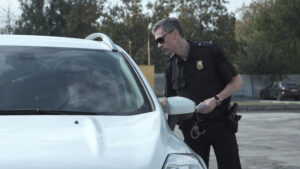Home »
Denver Roadside Maneuvers Attorneys
Do You Need Legal Help?
Success Stories







Excellent Attorney
Collin McCallin performed EXCELLENTLY with my case. He kept in consistent contact with me throughout and showed diligence and extreme care for what I was dealing with.
He worked effectively with the district attorney to resolve my case, and I could not be more pleased with the work. Thanks again!
- Tim W
The Best Choice
Working with Russell lifted a huge weight off of our shoulders and allowed my husband and me to get back to living our lives knowing we were in good hands. Russell is truly a genuine and caring person and my husband and I will forever be grateful for the hard work, empathy, and support Russell gave us with my case. His persistence and determination resulted in a full dismissal of all of the charges!"- Anonymous
Step 1
Reach Out to Our Attorneys
Step 2
We Fight Your Charges
Step 3
Get Back to Your Life


9 Legal Misteps to Avoid if You're Arrested in Colorado
Learn what you should and shouldn't be doing to help your criminal charge. Submit your information below to download our free PDF Guide
Denver Roadside Maneuvers Attorneys
If you have found yourself on this page, it is likely because you have recently been arrested or stopped for a . At Hebets & McCallin P.C., we understand the anxiety and stress you may be feeling as you face this charge. Your future and driving privileges may be on the line, and the uncertainty of what to expect next can be overwhelming. Our team is here to help guide you through the legal process and pursue the best possible outcome in your case. We understand the complexities of roadside maneuvers and the serious consequences that can result from them. Whether you are questioning the validity of the tests or unsure about how to proceed, we are ready to help you navigate this challenging situation.
Understanding Roadside Maneuvers And The Tests Involved
When a police officer pulls someone over on suspicion of driving under the influence (DUI), one of the first steps they may take is conducting roadside maneuvers. These tests are designed to assess a person’s level of impairment. However, the results of these tests are not always as clear-cut as they may seem. Understanding these maneuvers and how they are conducted is crucial when facing a DUI charge in Denver, CO.
There are three primary roadside maneuvers commonly used during DUI stops. The first of these is the horizontal gaze nystagmus (HGN) test. In this test, the officer asks the suspect to follow the officer’s finger or a pen with their eyes while keeping their head still. The officer is looking for jerking or twitching of the eyes, which can indicate alcohol intoxication. However, there are many reasons a person’s eyes may twitch, such as medical conditions, fatigue, or even stress. For the HGN test to be accurate, officers must follow very specific procedures. They must ensure the correct distance between the object being used for the test and ask questions about any prior head injuries. Additionally, they must make sure there are no distracting lights in the suspect’s field of vision. If any of these requirements are not followed, the test may not be reliable.
The second test is the walk and turn maneuver. This requires the suspect to walk nine steps in a straight line, heel to toe, and then turn around and walk nine steps back. While the officer observes the suspect’s ability to maintain balance and coordination, there are many factors that can impact a person’s ability to perform this test. A person might struggle with balance for reasons unrelated to alcohol consumption, such as medical conditions, footwear, or even nervousness. The officer must follow strict protocols to administer this test correctly, and if those protocols are not followed, the results may not be valid.
Finally, the one leg stand test asks the suspect to balance on one leg for 30 seconds. While this test evaluates balance and the ability to follow instructions, it is also challenging for many people, regardless of whether they are impaired. The officer will observe the suspect’s ability to stand still while also following directions. Like the walk and turn test, there are many reasons someone might not perform this task perfectly, and those reasons are not always related to alcohol or drug impairment.
What Should You Do If You Are Asked to Take Roadside Maneuvers?
If you are stopped and asked to perform roadside sobriety tests, it’s important to know that you have rights. These tests are voluntary, meaning you are not legally required to complete them. In many cases, officers have already decided to arrest the driver before they even ask for the roadside maneuvers. They may use the results of these tests to strengthen their case against you. While it can be tempting to comply with the officer’s requests, it is important to remember that performing poorly on these tests does not automatically prove that you are impaired. Many people, even those who are sober, can struggle with these tests due to stress, anxiety, or other factors unrelated to alcohol.
If you are unsure whether or not to take the tests, it may be helpful to politely refuse. This does not mean you are admitting guilt; it simply means you are protecting your rights and ensuring that the tests are not used to build a case against you unfairly. At Hebets & McCallin P.C., we understand that being stopped for suspected DUI can be a stressful and confusing experience. However, you are not alone. Our team is here to help you understand your rights and guide you through the legal process.
Why You Need a Denver Roadside Maneuvers Attorney
If you have been arrested after completing roadside maneuvers, you may be wondering what to expect next. The penalties for a DUI conviction in Denver, CO, can be severe, and having an experienced attorney by your side is critical. At Hebets & McCallin P.C., we can evaluate the circumstances of your case, including the administration of the roadside maneuvers, to determine whether they were conducted properly. If any mistakes were made during the testing process, we can use that information to challenge the validity of the evidence against you.
Our team has the knowledge and experience to help you navigate the complexities of DUI charges and roadside maneuvers. Whether we need to dispute the results of the tests, negotiate with prosecutors, or represent you in court, we are here to fight for the best possible result in your case. DUI charges can have lasting consequences, but with the right legal representation, you can work toward minimizing those consequences and protecting your future.
Hebets & McCallin P.C. serving in the following counties: Adams County, Arapahoe County, Boulder County, Clear Creek County, Denver County, Douglas County, Gilpin County, Jefferson County, Larimer County, and Weld County.
Related Videos
Can a reckless driving charge be reduced to a lesser offense?
What steps can someone take to reinstate their license after a suspension?
Can someone challenge a careless driving ticket in court?
How long does someone have to request an ALR hearing after a license suspension?
What are the penalties for hit and run in Colorado?
Why Choosing The Right Denver Roadside Maneuvers Attorneys is Crucial
If you have recently been arrested for a roadside maneuvers charge in Denver, CO, you may be wondering what steps to take next. The legal process can be overwhelming, and the potential consequences of a conviction are serious. Roadside maneuvers are often used to gather evidence against you, and it is important to understand how to challenge these tests in court. Choosing the right attorney can make all the difference in the outcome of your case. At Hebets & McCallin P.C., we are here to guide you through this complex legal situation and help you achieve the best possible result.
Serious Consequences of a Roadside Maneuvers Conviction
A conviction for a roadside maneuvers charge can result in significant consequences. These charges can lead to fines, jail time, a permanent criminal record, and even a suspended driver’s license. The severity of these penalties depends on the circumstances surrounding your case and whether or not you have prior offenses. A conviction could affect your ability to work, travel, and even maintain your personal life. The stakes are high, and it is crucial to have a dedicated legal team by your side to protect your rights and fight for the best outcome.
At Hebets & McCallin P.C., we understand the stress and uncertainty that comes with being arrested for a roadside maneuvers charge. Our team is committed to providing compassionate and effective legal representation. We will take the time to thoroughly review the details of your case, including how the roadside maneuvers were administered and whether they were conducted according to the proper guidelines. We understand that these tests are subjective and can be influenced by many factors unrelated to alcohol or drug impairment.
Our goal is to help you navigate the complicated court and administrative proceedings that come with a roadside maneuvers charge. Whether we need to challenge the results of the tests or negotiate with prosecutors, we will work tirelessly to help you achieve the best possible outcome. We will take the time to explain the legal process to you in clear terms, so you are never left in the dark about what’s happening in your case.
Related Blogs
Mistakes to Avoid After an Arrest For Roadside Maneuvers in Denver
If you’ve recently been arrested for roadside maneuvers in Denver, understanding what not to do can make a significant difference in the outcome of your case. Here are some common mistakes to avoid:
Talking Too Much to Law Enforcement
One of the biggest mistakes people make after an arrest is talking too much to law enforcement. When you are arrested for roadside maneuvers, anything you say can be used against you in court. It’s natural to want to explain yourself, but it’s always best to remain silent and request to speak with an attorney. By doing so, you avoid saying something that could harm your defense.
Failing to Document Important Details
Another mistake is not taking the time to document important details about the arrest. It’s essential to remember any facts about the incident that could help your case. This includes how the arrest unfolded, the behavior of the police officers, and whether any witnesses were present. Having this information can provide vital support in building your defense.
Listening to Unqualified Advice
After an arrest, it’s common for people to seek advice from friends or family members. While their intentions may be good, their advice may not always be accurate or helpful in a legal context. The laws surrounding roadside maneuvers are complex, and listening to unqualified advice can lead to misunderstandings and poor decisions. Always consult with a professional who understands the law to avoid making mistakes.
Ignoring Legal Processes
It can be easy to assume that dealing with your charges will be simple or straightforward, but this is not the case. Ignoring deadlines, skipping hearings, or failing to respond to important legal notices can cause serious consequences, including more severe penalties. It’s crucial to stay on top of the legal processes involved in your case.
Frequently Asked Questions About Roadside Maneuver Arrests in Denver, CO
If you have recently been arrested for a roadside maneuver violation in Denver, you may have several important questions about your legal situation. Below are some commonly asked questions to help you better understand your rights and what you can expect moving forward. If you need assistance with your case, the team at Hebets & McCallin P.C. is here to provide guidance.
A roadside maneuver typically refers to a driving action that occurs when a law enforcement officer asks you to perform a series of driving tests during a traffic stop. These tests, such as a turn, lane change, or stop sign maneuver, are often used by police to assess whether a driver is impaired. If you fail to complete these tests properly, it can lead to an arrest for suspicion of driving under the influence (DUI) or other related offenses.
It is important to remain calm and comply with the officer’s instructions. However, you are not obligated to perform roadside tests such as the field sobriety tests or provide a sample of your breath for a preliminary alcohol screening. While refusing these tests may have consequences, you do have the right to decline. Your decision should be made carefully based on your situation, and you may wish to consult with an attorney as soon as possible after your arrest.
If you fail the roadside maneuver tests, the officer may place you under arrest for suspected DUI or other charges. Failing the tests does not automatically mean you will be convicted, as there are often questions about the accuracy of these assessments. An attorney can help challenge the results or investigate the circumstances surrounding the stop to ensure that your rights were upheld during the process.
Yes, you can contest an arrest for a roadside maneuver violation. If you believe that the tests were improperly administered or that there were errors in the officer’s judgment, an attorney can investigate the details of your case. There may be flaws in the way the tests were conducted, or other factors that contributed to your failure, such as medical conditions or environmental distractions. A legal professional can assess the evidence and build a defense strategy tailored to your case.
The penalties for failing roadside maneuver tests or being arrested on suspicion of DUI can vary, depending on the specific charge and whether you have prior offenses. Possible consequences include fines, license suspension, mandatory driving education, or even jail time. The severity of the penalties will depend on factors such as blood alcohol content (BAC) levels, prior arrests, and whether you refused testing. It is crucial to have legal representation to understand the full scope of potential penalties and work toward the best possible outcome.
Yes, it is highly recommended to seek legal advice if you have been arrested for a roadside maneuver-related offense. A skilled attorney can assess your case, explain your rights, and help you navigate the legal process. They can also challenge evidence, negotiate on your behalf, and work to reduce charges or penalties where possible. Having an experienced attorney by your side can significantly increase your chances of a favorable outcome.
Denver Roadside Maneuvers Attorneys Client Story
This client story is for educational purposes only.
Bradley had never been in trouble with the law before. He was an ordinary guy who worked hard, spent time with his family, and did his best to follow the rules. But one night, after a stressful week, things went wrong. What started as a harmless attempt to get around traffic quickly turned into a nightmare when he was pulled over by the police for what they called “roadside maneuvers.”
The officer accused him of dangerous driving and swerving, things Bradley knew he hadn’t done. But in the eyes of the law, it didn’t matter what he thought. He was arrested and charged with something that could ruin his life. The weight of it all hit him like a ton of bricks. Bradley couldn’t sleep, couldn’t think straight. He was scared of what this meant for his job, his reputation, and his future.
That’s when Bradley found Russell Hebets at Hebets & McCallin P.C.
Russell didn’t waste any time. From the moment Bradley walked into the office, Russell made him feel heard and understood. He took the time to listen to Bradley’s side of the story. Russell explained the charges, but more importantly, he explained that he would do everything he could to fight for Bradley’s rights. Russell reassured him that he wasn’t alone and that he had the team at Hebets & McCallin P.C. behind him every step of the way.
Russell didn’t just see Bradley as another case. He saw a man who was scared and confused, and he was determined to turn things around. Through careful investigation, Russell found that the arresting officer had made mistakes during the stop, and there was no clear evidence to back up the charge. With this information, he went to work.
Russell’s team fought hard in court. They gathered everything they could to challenge the accusations and present a strong defense. And it worked. The charges against Bradley were dismissed, and just like that, the weight that had been on his shoulders was gone.
For Bradley, the relief was indescribable. He was back to his life, his family, his job—everything he feared he might lose. He couldn’t believe how different things had turned out after working with Russell Hebets.
If you’ve been arrested for roadside maneuvers in Denver, you don’t have to face this alone. Just like Bradley, you can find the support and guidance you need with the team at Hebets & McCallin P.C. Russell Hebets and his team know how to fight for your rights. They’ll take the time to understand your situation and work tirelessly to protect your future.
Contact Hebets & McCallin P.C. If You Were Arrested For Roadside Maneuvers in Denver, CO
If you have been arrested for roadside maneuvers in Denver, you may be feeling overwhelmed and unsure of what to do next. The legal process can be confusing, and the consequences of a conviction can have a long-lasting impact on your life. At Hebets & McCallin P.C., we understand the challenges you are facing and are here to help. Our team of dedicated Denver roadside maneuvers attorneys will work hard to secure the best possible outcome for your case.
We offer free consultations to discuss your situation and answer any questions you may have. During this consultation, we will listen to your side of the story, review the details of your arrest, and explain your legal options. Whether you are facing fines, license suspension, or other penalties, we will help you understand the best path forward.
Our firm is committed to providing aggressive legal representation. We will investigate the circumstances surrounding your arrest, look for any possible defenses, and fight to protect your rights. We are dedicated to helping you achieve a positive resolution, and we will work tirelessly to get the best possible result in your case.
If you were arrested for roadside maneuvers in Denver, do not hesitate to contact Hebets & McCallin P.C. for a free consultation. We are here to help you navigate this challenging time and provide you with the support you need. Call us today to discuss your case and take the first step toward securing your future.
Client Reviews
![]()
Professional, Understanding, friendly, Communicative and Knowledgeable are a few words that i can accurately describe the team over here. I am very satisfied with the service given by Mr. Hebets. He went above and beyond and helped put my worries at ease with my DUI case. He guided me with what to do and help me get on the right track for getting a restricted license and what I needed to do for my case. My family is very pleased with the work he did and I highly recommend coming here.











